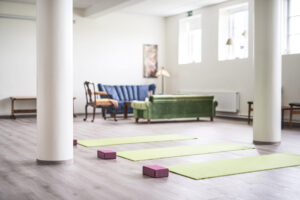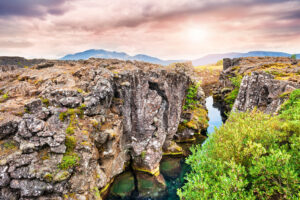Icelandic architecture has influence from Scandinavia and lack of trees native to the island. This is what results in turf and grass covered houses. The Swiss Chalet style has a prevailing inspiration in the culture of Iceland. Several timber constructions were built this way. Concrete and stone were popularly used as construction materials. These styles differ all around the country.
The Architecture in South Iceland
The architecture is primarily low-rise with 2 or 3 storey constructions. Smaller municipal constructions and houses were wooden-framed. It is clad in corrugated metal and wooden planks. They appear in conventional bright colors. A lot of architectural influences are observed in the capital like Swiss chalet style.
History of Architecture in South Iceland
OlafurEliasson and EinarÞorsteinnÁsgeirsson is credited for the appearance and structure of Harpa. The reconstructed replica of the longhouse makes use of the original construction method of a stone base, turf roof/walls and wood frame. Several of the 19th century Reykjavik’s homes are accumulated in the foreground with the Harpa Concert Hall and modern skyscrapers along seaside.
South Iceland has different helter-skelter collage of various designs, influences and styles. Despite nation’s capital and a metropolitan, Reykjavik has no definite direction with respect to architecture.
Þjóðveldisbærinn, located in Þjórsárdalur, is a Viking longhouse that is reconstructed with turf, wood and stone together forming a natural space.
Their housing designs, scattered farmsteads come from the Viking Age and the Settlement Era. They are an integral section of Icelandic culture. Icelandic people lived in their precarious, magnificent and natural surroundings in harmony.
Until the 20th century from the age of settlement, turf houses were dominating. They were timber houses, based on longhouse designs of Denmark, Norway, Scottish Isles and Sweden.
The turf houses were based on the foundation which were generally one or more rock layers. However, with a wooden base, double stacked walls and compressed soil lining for isolation, the Icelandic homes became iconic.
Some of the sites to view Architecture in South Iceland
- Turf church- The Arbaer Museum church is one of the six that are preserved turf Icelandic churches. It was assembled out of Silfrastaðakirkja Church ruins in Skagafjörður Fjord.
- Lavish turf homes- These homes were houses of priests or wealthy farmers. Some of the local heritage treasures include Bustarfell in Vopnafjörður, Glaumbær in Skagafjörður and Laufás in Eyjafjörður.
- Smaller abode- Árbær in Reykjavík and Selið in Skaftafell are smaller preserved abodes.
- In 1860, the stone structures of Reykjavik have arisen in between timber houses of Scandinavia. Skuli, a grand stone house called Viðeyjarstofa is new in local construction.
- Series of stone houses-From 1750-1790, there were a series of stone houses like the Westman Islands Landakirkja Church and Garobaer-President’s abode Bessastaðastofa.
- Fríkirkjuvegur 11– This house boasts architectural fusion of Iceland. The coat is made of corrugated iron and the house is made of wood. The style is Italian while the foundation is made of stone.
The Change
The change occurred about the midst of the 18th century. This was when the Danish government began to infuse the industrial development to Iceland. The local architecture changed from then. Stone houses started rising all over the nation. This is also the time when Reykjavik began to form and develop like a trading post and also the nation’s centre.
Conclusion
Architecture in South Iceland boasts a lengthy history of turf and timber houses. Until the early 1300s, the turf houses were timber houses. They were supported, isolated and coated with soil and turf. Post this time came housing design at island’s shores with corrugated iron. The old Icelandic street embellished plenty of constructions in a variety of colors. South Iceland architecture is influenced by Scandinavian background. The mid-18th century has seen a lot of change with industrial development.





